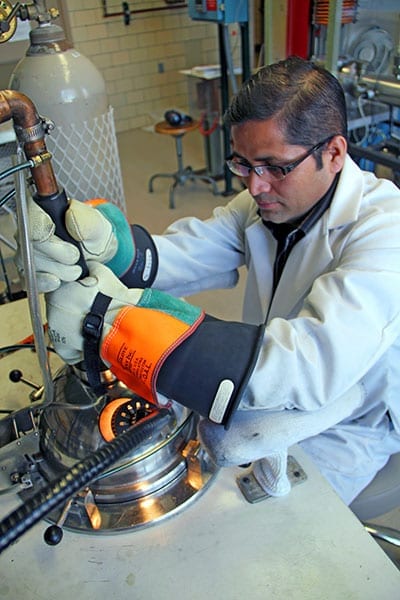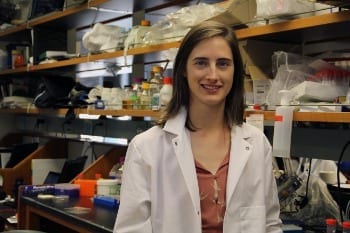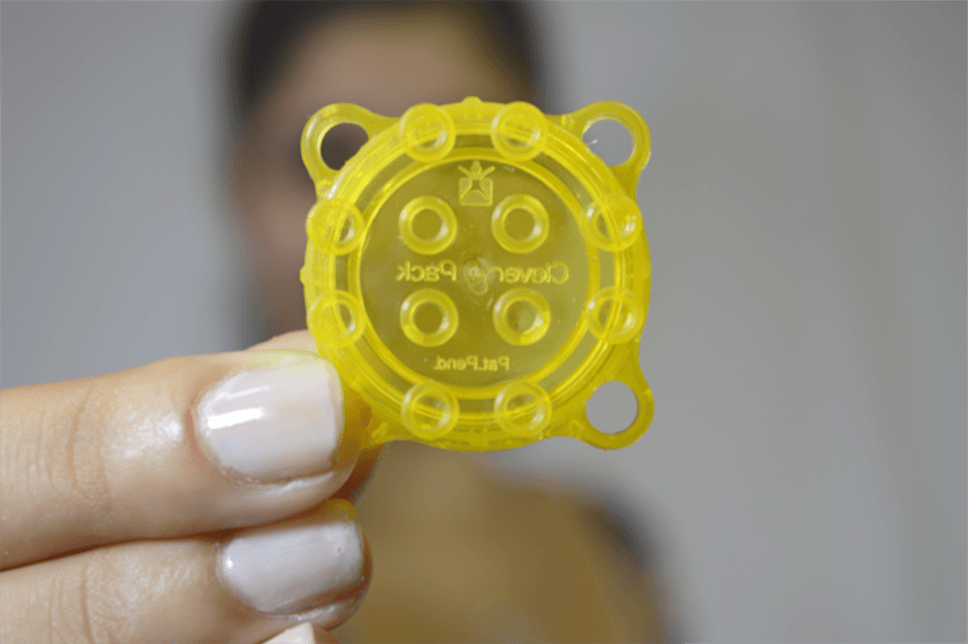
Karl A. Gschneidner and fellow scientists at the U.S. Department of Energy’s Ames Laboratory have created a new magnetic alloy that is an alternative to traditional rare-earth permanent magnets.
The new alloy—a potential replacement for high-performance permanent magnets found in automobile engines and wind turbines–eliminates the use of one of the scarcest and costliest rare earth elements, dysprosium, and instead uses cerium, the most abundant rare earth.
The result, an alloy of neodymium, iron and boron co-doped with cerium and cobalt, is a less expensive material with properties that are competitive with traditional sintered magnets containing dysprosium.
Experiments performed at Ames Laboratory by post-doctoral researcher Arjun Pathak, and Mahmud Khan (now at Miami University) demonstrated that the cerium-containing alloy’s intrinsic coercivity—the ability of a magnetic material to resist demagnetization—far exceeds that of dysprosium-containing magnets at high temperatures. The materials are at least 20 to 40 percent cheaper than the dysprosium-containing magnets.
“This is quite exciting result; we found that this material works better than anything out there at temperatures above 150° C,” said Gschneidner. “It’s an important consideration for high-temperature applications.”
Previous attempts to use cerium in rare-earth magnets failed because it reduces the Curie temperature—the temperature above which an alloy loses its permanent magnet properties. But the research team discovered that co-doping with cobalt allowed them to substitute cerium for dysprosium without losing desired magnetic properties.
Finding a comparable substitute material is key to reducing manufacturing reliance on dysprosium; the current demand for it far outpaces mining and recycling sources for it.
Read more: Ames Laboratory scientists create cheaper magnetic material for cars, wind turbines
The Latest on: Magnetic material
[google_news title=”” keyword=”Magnetic material” num_posts=”10″ blurb_length=”0″ show_thumb=”left”]
via Google News
The Latest on: Magnetic material
- Researchers use superconducting material to make clean fusion energy breakthrough: 'Virtually limitless power production'on May 7, 2024 at 8:52 pm
The scientists created a new type of magnet that broke the world record for magnetic field strength, according to MIT News. Made from a high-temperature superconducting material, the magnet has a ...
- Latin Metals Receives Positive Results from Airborne Magnetic and Radiometric Survey, Organullo Project, Argentinaon May 6, 2024 at 7:31 am
The Organullo project is transected by a north-northeast-trending large-scale graben, which measures 5km across. The graben itself is displaced by the Medial Fault which divides the graben into West ...
- Electric Vehicles and Renewables Fuel Soft Magnetic Composites Industry Boom: Market Value to USD 1,08,392.0 Million by 2033on May 6, 2024 at 3:33 am
According to a Future Market Insights (FMI) report, the global soft magnetic composite market value is forecast to increase from USD 44,459.0 Million in 2023 to USD 108,392.0 Million by 2033. Over the ...
- Bioinspired magnetic soft actuators rapidly deform using bone-in-flesh constructson May 1, 2024 at 5:00 pm
As an alternative, some researchers incorporated prefabricated rigid magnetic components directly into soft actuators. But without a general design approach to optimize the integration of hard and ...
- Temdan Magnetic for iPhone 15 Pro Max Case Clear, Now 24% Offon April 27, 2024 at 9:13 am
The Temdan Magnetic iPhone 15 Pro Max Case Clear is distinctively designed to be compatible with all MagSafe accessories. This is made possible due to the presence of 38 upgraded powerful N52 magnets ...
- Laser light makes a material magneticon April 26, 2024 at 6:59 am
By applying laser light that is both circularly polarized – that is, its polarization traces out a corkscrew-like shape as it propagates – and resonant with the frequency of atomic oscillations within ...
- Newfound ‘altermagnets’ shatter the magnetic status quoon April 25, 2024 at 3:00 am
The newly discovered type of magnetic material could improve existing tech, including making better and faster hard drives.
- The Magnetic Fields’ Stephin Merritt: ‘I own up to using the word tranny when it was acceptable’on April 25, 2024 at 1:53 am
Before becoming a cult indie-rock star with his band The Magnetic Fields, songwriter Stephin Merritt ... his relationship with the material has been complicated by life and its many challenges. One of ...
- Researchers show it's possible to teach old magnetic cilia new trickson April 24, 2024 at 12:15 pm
Magnetic cilia—artificial hairs whose movement is powered by embedded magnetic particles—have been around for a while, and are of interest for applications in soft robotics, transporting objects and ...
- Look! 3.7 Billion-Year-Old Rocks Reveal The Oldest Evidence of Earth’s Magnetic Fieldon April 24, 2024 at 6:00 am
The new work offers a salve against worry. Their work suggests Earth has sustained a magnetic field since at least 3.7 billion years ago, the age of the cake-looking BIF rocks. This places the rocks ...
via Bing News










